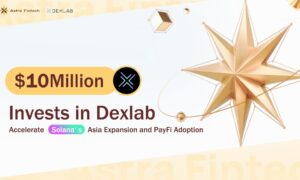In recent years, technology has become a driving force behind significant changes in modern education. The integration of digital tools and resources into the learning process has revolutionized how students acquire knowledge and how educators teach. From online courses to virtual classrooms, the educational landscape is evolving at a pace never seen before. This transformation is providing new opportunities while also posing challenges for educators, students, and institutions. In this article, we’ll explore the positive impacts of technology on modern education and how it is reshaping learning experiences.
- Accessibility and Flexibility in Learning
One of the most profound impacts of technology on education is the increase in accessibility. Students today can access vast amounts of information and educational resources from virtually anywhere in the world. With the rise of e-learning platforms and mobile applications, learning is no longer confined to the four walls of a traditional classroom. Whether it’s a student in a remote area or someone with limited mobility, technology enables access to education through online courses, video lectures, and digital textbooks.
Flexibility is another crucial advantage. With the availability of self-paced online courses and interactive learning platforms, students can learn at their own speed and on their own schedule. This is particularly beneficial for adult learners or those who need to balance education with other responsibilities, such as work or family. This flexibility allows students to take control of their education and customize their learning experiences to suit their needs.
- Enhanced Student Engagement
Technology has also revolutionized the way students engage with educational content. Traditional teaching methods often relied on textbooks, lectures, and note-taking, which can be monotonous for students. However, with interactive tools such as educational games, simulations, and multimedia presentations, learning becomes more engaging and dynamic. Tools like Google Classroom, Kahoot, and Edmodo allow students to interact with their peers, share ideas, and collaborate on projects in a more immersive way.
Virtual reality (VR) and augmented reality (AR) are also changing how subjects are taught. For instance, VR allows students to explore historical sites, dissect virtual organisms, or simulate scientific experiments. AR can bring textbook images to life, making learning more engaging and tangible. These interactive experiences stimulate curiosity and make complex concepts easier to understand. Technology has also revolutionized the writing process due to which various students now rely on writing tools and often take help from essay writing service.
- Personalized Learning Experiences
One of the most significant advantages of technology in education is its ability to facilitate personalized learning. Every student has a unique learning style, and with the help of data-driven tools, educators can now tailor their teaching methods to suit individual needs. Learning management systems (LMS) like Canvas or Moodle offer a platform for tracking student progress and adjusting instruction based on performance. Algorithms can assess how well students understand material and recommend resources or assignments accordingly.
Moreover, artificial intelligence (AI) is increasingly being used to enhance personalized learning experiences. AI-powered tools, like adaptive learning platforms, analyze student responses and adjust the difficulty of the lessons accordingly. This ensures that students who need more time to grasp a concept can receive additional support, while those who master material quickly can move on to more challenging content. This personalized approach helps bridge learning gaps and ensures that students receive the attention they need.
- Collaboration and Communication
Collaboration is essential in today’s interconnected world, and technology has made it easier for students to work together, regardless of location. Video conferencing tools like Zoom and Microsoft Teams enable students and teachers to communicate in real time, making it easier to conduct virtual classes or group discussions. Cloud-based platforms such as Google Drive allow for easy collaboration on assignments and projects, with students able to contribute and edit documents simultaneously.
This ease of communication also extends beyond the classroom. Teachers can provide instant feedback, answer questions through chat or email, and share resources effortlessly. Students, in turn, can reach out to their instructors or peers for help and clarification, fostering a more collaborative and supportive learning environment.
- Lifelong Learning Opportunities
Technology has extended education beyond the traditional student population, creating opportunities for lifelong learning. Online platforms like Coursera, Udemy, and Khan Academy offer courses on nearly every topic imaginable, allowing individuals to continue learning throughout their lives. Whether someone is looking to pick up a new skill, advance in their career, or explore a hobby, technology provides easy access to high-quality educational content.
Furthermore, micro-credentialing and online certifications have become popular as people seek to upskill or reskill in response to changes in the job market. With these platforms, learners can earn certificates or badges to demonstrate mastery in specific areas, which can enhance their employability and career growth.
- Challenges and Considerations
While the benefits of technology in education are undeniable, it’s important to acknowledge the challenges. Not all students have equal access to digital devices or reliable internet connections, which can widen the gap between privileged and underprivileged learners. Additionally, the reliance on technology can sometimes lead to reduced face-to-face interaction, which is vital for building social skills and emotional intelligence.
Cybersecurity and privacy are also concerns, especially as more personal data is shared and stored on educational platforms. Ensuring that students’ information is protected should be a priority for educational institutions and tech companies alike.
Conclusion
The integration of technology into modern education has brought about transformative changes, making learning more accessible, engaging, and personalized. While challenges remain, the benefits far outweigh the drawbacks. Technology has the potential to level the playing field, allowing students from all walks of life to access quality education and expand their knowledge. As educational institutions continue to innovate and adapt, the future of education will undoubtedly be shaped by these technological advancements.

































